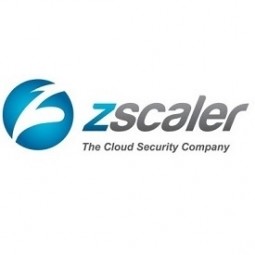Technology Category
- Cybersecurity & Privacy - Application Security
- Cybersecurity & Privacy - Cloud Security
Applicable Industries
- Cities & Municipalities
- National Security & Defense
Use Cases
- Smart City Operations
- Tamper Detection
Services
- Cloud Planning, Design & Implementation Services
- Cybersecurity Services
About The Customer
The customer in this case study is the City of Boston, located in Massachusetts. The city government is working towards modernizing its services by reducing its data center footprint and shifting its infrastructure, applications, and data to the cloud. The city's IT team, led by Chief Information Security Officer Greg McCarthy, is responsible for this transition. The team manages services for 5,500 users and is focused on providing responsive, modern citizen services. They are adopting a 'cloud first' mindset and are looking for secure, scalable, and cost-effective solutions for cloud access.
The Challenge
The City of Boston, like many cities across the country, was working to reduce its data center footprint and shift its infrastructure, applications, and data to the cloud. The goal was to provide responsive, modern citizen services. However, as the city relied more on web-based applications and infrastructure, new challenges arose. The existing internet security solution was inefficient and unreliable. It was increasingly important to ensure employees could safely access web-based applications and data. The city needed a secure, scalable, cost-effective cloud access for its 5,500 users to improve workflow efficiency and reduce user frustration. The city was also looking to shift to a cloud security platform and adopt a zero trust approach.
The Solution
The City of Boston issued an RFP to support the continued shift from an on-premises infrastructure to cloud. After evaluation, they selected Zscaler Internet Access™ (ZIA™), a cloud security platform that includes a secure internet and web gateway solution. The deployment of ZIA reduced the opportunity for malware and other threats to get onto the internal network or move laterally across it. ZIA also provided visibility into user activity and helped keep Boston’s cyber team aware of all applications running in the environment. The Boston team also rolled out a new identity management solution and deployed a new access portal, working with SailPoint, Bing, and Radiant Logic. They plan to continue evolving cyber defenses to meet employee and mission needs.
Operational Impact
Quantitative Benefit

Case Study missing?
Start adding your own!
Register with your work email and create a new case study profile for your business.
Related Case Studies.

Case Study
Turning A Stadium Into A Smart Building
Honeywell created what it called the “intelligent system” for the National Stadium in Beijing, China, turning the venue for the opening and closing events at the 2008 Summer Olympics into a “smart building.” Designed by highly controversial artist Ai Weiwei, the “Bird’s Nest” remains one of the most impressive feats of stadium architecture in the world. The 250,000 square meter structure housed more than 100,000 athletes and spectators at a time. To accommodate such capacity, China turned to Honeywell’s EBI Integrated Building Management System to create an integrated “intelligent system” for improved building security, safety and energy efficiency.
.png)
Case Study
Smart Street Light Network (Copenhagen)
Key stakeholders are taking a comprehensive approach to rethinking smart city innovation. City leaders have collaborated through partnerships involving government, research institutions and solution providers. The Copenhagen Solutions Lab is one of the leading organizations at the forefront of this movement. By bringing together manufacturers with municipal buyers, the Copenhagen Solutions Lab has catalyzed the development and deployment of next-generation smart city innovations. Copenhagen is leveraging this unique approach to accelerate the implementation of smart city solutions. One of the primary focus areas is LED street lighting.

Case Study
Buoy Status Monitoring with LoRa
The Netherlands are well-known for their inland waterways, canals, sluices and of course port activities. The Dutch Ministry of Infrastructure indicates that there are thousands of buoys and fixed items in and near water environments that would profit from IoT monitoring. One of the problems with buoys for example, is that they get hit by ships and the anchor cable breaks. Without connectivity, it takes quite some time to find out that something has happened with that buoy. Not to mention the costs of renting a boat to go to the buoy to fix it. Another important issue, is that there is no real-time monitoring of the buoys at this moment. Only by physically visiting the object on the water, one gains insight in its status.

Case Study
Barcelona Case Study
Barcelona’s heavy traffic and its associated high levels of pollution were the primary factors that motivated some companies and universities to work on strategies for improving traffic in the city centre. Bitcarrier is one of the technologies involved in the In4Mo Project, whose main objective is to develop the applications that form the core of smart mobility, one of the fundamental pillars of the smart city concept.

Case Study
China Mobile Smart Parking
Smart Parking, powered by NB-IoT technology, is making it easier for drivers to find free parking spots. Cities can better manage their parking assets and maximize the revenue available to them as a result. Drivers searching for parking create congestion and pollution by circling and hunting for available parking. Smart Parking services are able to significantly ease these problems by guiding a driver directly to a parking space.








